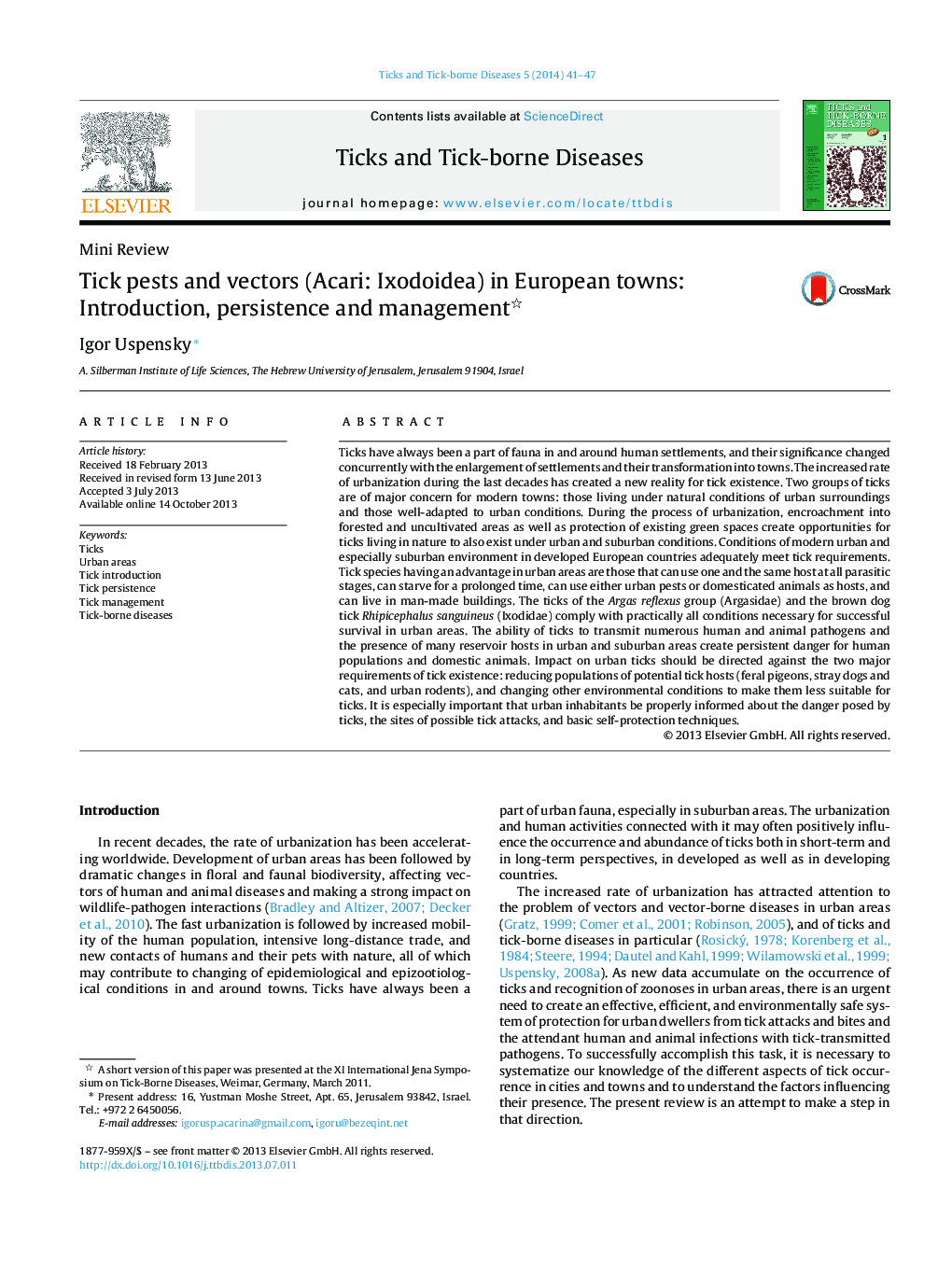| کد مقاله | کد نشریه | سال انتشار | مقاله انگلیسی | نسخه تمام متن |
|---|---|---|---|---|
| 2474120 | 1113115 | 2014 | 7 صفحه PDF | دانلود رایگان |

Ticks have always been a part of fauna in and around human settlements, and their significance changed concurrently with the enlargement of settlements and their transformation into towns. The increased rate of urbanization during the last decades has created a new reality for tick existence. Two groups of ticks are of major concern for modern towns: those living under natural conditions of urban surroundings and those well-adapted to urban conditions. During the process of urbanization, encroachment into forested and uncultivated areas as well as protection of existing green spaces create opportunities for ticks living in nature to also exist under urban and suburban conditions. Conditions of modern urban and especially suburban environment in developed European countries adequately meet tick requirements. Tick species having an advantage in urban areas are those that can use one and the same host at all parasitic stages, can starve for a prolonged time, can use either urban pests or domesticated animals as hosts, and can live in man-made buildings. The ticks of the Argas reflexus group (Argasidae) and the brown dog tick Rhipicephalus sanguineus (Ixodidae) comply with practically all conditions necessary for successful survival in urban areas. The ability of ticks to transmit numerous human and animal pathogens and the presence of many reservoir hosts in urban and suburban areas create persistent danger for human populations and domestic animals. Impact on urban ticks should be directed against the two major requirements of tick existence: reducing populations of potential tick hosts (feral pigeons, stray dogs and cats, and urban rodents), and changing other environmental conditions to make them less suitable for ticks. It is especially important that urban inhabitants be properly informed about the danger posed by ticks, the sites of possible tick attacks, and basic self-protection techniques.
Journal: Ticks and Tick-borne Diseases - Volume 5, Issue 1, February 2014, Pages 41–47